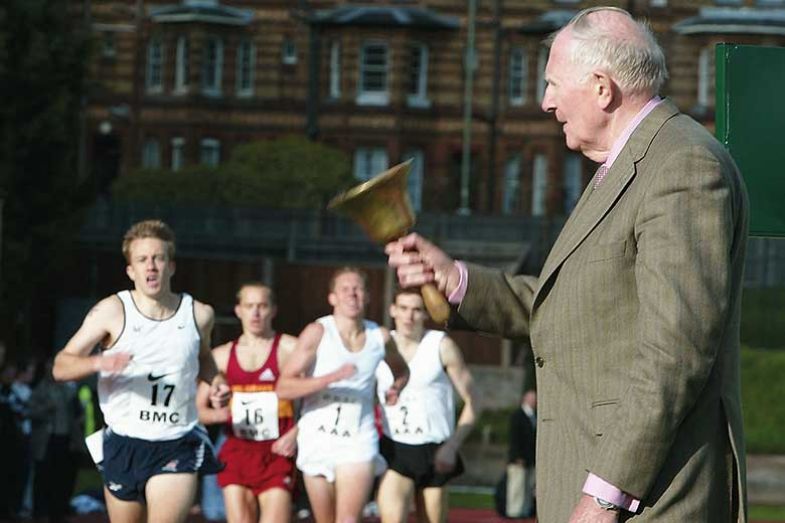Victor Zue could have easily retired when he stepped down as the director of the Massachusetts Institute of Technology’s largest research laboratory at the age of 65 seven years ago.
But Zue, who led the MIT Computer Science and Artificial Intelligence Laboratory from 2007 to 2011, had no such plans. Now 72, he is still busy winning grants and leading research projects as a professor of electrical engineering.
“If people are still producing good ideas and research, it’s unreasonable to cut them off because they reach a certain age,” reflects Zue, whose research area of spoken word interaction with computers is entering a golden age, with the Alexa and Siri virtual assistants now present in millions of homes.
And why would Zue want to leave what is, in many ways, his second home? He is married to an MIT researcher and has spent his whole career at the institute, having first arrived as a student in 1970. During that period, 16 members of his family have also been students there.
Despite the productivity of older academics like Zue, however, some scholars are worried about the impact of such professional longevity.
“We have a very big problem with this in the US because tenure means there is no default retirement age,” says Michelle A. Williams, dean of the Harvard T. H. Chan School of Public Health. Having an “inverted pyramid of staff top-heavy with full professors where [in some Harvard departments] the average age is well above 60” is not conducive to creating a vibrant research culture, regardless of the undoubted quality of staff, believes Williams. “Some departments will only have one – or sometimes no – junior researcher, so you have less sense of community, as junior staff are more likely to work together,” she explains.
Nor is concern confined to the US, whose universities abolished compulsory retirement at 70 in 1994. In the UK, where compulsory retirement at 65 was abolished in 2011, the debate has been reignited by legal challenges to the controversial mandatory retirement policies subsequently introduced at the universities of Oxford and Cambridge, using a mechanism that allows individual employers to retain compulsory retirement if they can justify the need for it.
In August, John Pitcher, an English literature professor, became the first Oxford scholar to take an age discrimination case to an employment tribunal, saying it was wrong that he was “forcibly retired” from his £83,000-a-year professorship in 2016. Oxford has defended the practice on the grounds of promoting “diversity and intergenerational fairness”. More cases are set to follow. Meanwhile, the bitter dispute over proposed cuts to pensions provided by the Universities Superannuation Scheme – shelved for now, at least – has raised the prospect that less generous terms will force UK university staff to work on into their seventies.

Williams is certainly not dismissive of the contribution of Harvard’s older academics. After all, they have made it through the university’s notoriously tough tenure tests, she says. But her experience as a young epidemiology researcher at Princeton University in the 1980s working in the laboratory of a thirtysomething assistant professor named Eric Wieschaus convinces her that youth is the most important ingredient for most groundbreaking research.
“Young people were trying new things and senior people were there for administrative and intellectual backup,” she explains of her time with Wieschaus – who went on to win the Nobel Prize in Physiology or Medicine in 1995 for his research into the genetic control of embryonic development.
This dynamic is reflected in statistics from the National Institutes of Health, the US’ primary research funding agency for medical and biological science. In 1980, about 21 per cent of R01 grants were awarded to principal investigators aged 35 or younger, while virtually none went to those aged 66 or over. By 2012, the positions had reversed, with around 2 per cent of grants going to PIs aged 35 or under while nearly 10 per cent went to those aged 66 or older, Nature reported in 2015. A 2017 paper by Michael Levitt and Jonathan M. Levitt – of Stanford and Wolverhampton universities respectively – reveals that almost 5 per cent of R01 grant winners in 2014 were 71 or over, up from 0.6 per cent between 1980 and 1994. Accordingly, the average age of R01 grant winners rose from 40 in 1980 to 50 in 2014, with US life expectancy rising by five years over the same period.
The paper, “Future of fundamental discovery in US biomedical research”, published in PNAS, notes that US dominance of the scientific Nobel prizes has declined in recent years, and speculates that the “bias against younger basic scientists” who tend to make “unexpected, fundamental discoveries” may be a reason.
The NIH has been responsive to the concerns, although it has struggled to settle on a solution. In May 2017, the agency announced that it would free up more funding for early and mid-career researchers by capping the number of grants a PI could hold at any one time. After objections from senior scientists, the plan was replaced a month later by a proposal to fund 200 more grants for early career scientists, and 200 more for mid-career scientists at risk of losing their funding. However, established researchers with small labs complained that they would lose out. So, in December 2017, the agency signalled that, instead, it would steer the extra grants to any researcher whose lab is at risk of folding, regardless of age. But a year on, the policy has still to be finalised.
The NIH says that the funder has initiated steps to fund more early career researchers and established a working group on the issue which will share the recommendations of its Next Generation Researchers Initiative at a meeting of its advisory committee to the director on 13 December.

In Australia, the mandatory retirement has been gradually rolled back since the 1990s, and the percentage of total academic staff at Australian universities aged over 64 increased from 1 per cent in 1997 to 4.7 per cent in 2012, according to a study by Alysia Blackham, senior lecturer in law at the University of Melbourne, published in the journal Legal Studies in April 2018.
Furthermore, Australia’s academic workforce, notes Blackham, is much older than the UK’s: some 25.6 per cent of its total academic workforce is 55 or older, compared with about 15.9 per cent of UK full-time academics who are 56 or older. At some institutions, as many as 45 per cent of academics are over the age of 50, she adds.
While the existence of a “relatively generous” defined benefit pension scheme has limited the temptation for academics to linger in the Australian academy long beyond retirement age, the removal of compulsory retirement “may have reduced the number of ongoing academic posts available to younger workers”. With about half of Australia’s 67,000 casual staff below the age of 35, it is clear that “younger and junior academics are occupying less secure and more precarious roles than their older colleagues” – although Blackham concedes that factors other than delayed retirements may have caused the trend.
And, in comments to Times Higher Education, she says that the “intergenerational tensions” that were feared when compulsory retirement was abolished did not generally eventuate.
“However, there is anecdotal evidence that this is more of a problem in particular faculties or departments, where there are few permanent posts and a proliferation of temporary contracts,” she adds. “To some extent, however, this reflects the trend towards casualisation in higher education, and the growing precarity of universities’ funding models, as much as the removal of retirement ages.”
Meanwhile, in China, senior academics – especially members of the Chinese academies of science or engineering – tend to be able to attract large grants from national, provincial and municipal sources, according to Gabriel Leung, who, in 2013, became the youngest ever dean of the University of Hong Kong’s Li Ka Shing Faculty of Medicine when he was appointed at the age of 41.
That is not a problem in itself, believes Leung. “If they are mentoring younger scientists, acting as a sounding board or playing devil’s advocate constructively, that’s fine,” he says. “But if they are always driving their own agenda and not supporting younger scientists, then you don’t get that creative destruction [of old ideas] that great science requires,” he adds. And, in his view, there are too many examples of older scientists not knowing when to step aside: “I hate to be ageist, but there are many instances of people who are not cutting edge behaving as if they were.”
However, since some older people do continue to do productive and innovative science, he believes that mandatory retirement policies “rarely work in academia”.
Blackham’s research indicates that some Australian universities are adopting “concerning and potentially discriminatory” strategies as an alternative to retirement ages, such as redundancy packages, pre-retirement contracts and “appeals to the ‘altruism’ of individual academics”. However, other institutions “do not appear to be experiencing the same challenges”, she adds.
In the US, some universities have offered older staff up to a year’s salary to retire. However, such offers are by no means always accepted. Of the 245 staff made such an offer at the University of Nebraska, Lincoln, in 2010, 70 per cent reportedly turned it down.
Other observers suggest limiting tenure to 30 or 35 years – or, in systems like the UK that don’t have tenure, adopting stricter performance management checks to ensure that older staff are still pulling their weight.
An alternative remedy is the “professor, post-tenure” position created by MIT, which allows older academics to retire from a tenured position but to continue with some duties and to be paid accordingly. Noam Chomsky, the linguist, cognitive scientist and political activist, officially retired from MIT in 2002, having joined the faculty in 1955, but continued to work there until last year. “I retired in order to open up an opportunity to appoint a junior faculty member, but was able to retain an office and to continue teaching and other university activities as before, essentially on my own time and with university facilities,” says Chomsky, who, now aged 90, moved to a part-time post at the University of Arizona last autumn.
Zue has also adopted a professor, post-tenure position, describing it as a “good compromise” between enforced retirement and tenure-for-life: “You have flexibility on how much you teach and you have to acquire your own research grants, but you make space for the institution to grow.”

But not all researchers are so happy about older academics’ submitting research grant applications instead of disappearing into retirement. Gergely Toldi, a member of the Global Young Academy, founded in 2010 to facilitate discussions between young scientists across the world, worries that older academics have an unfair advantage over younger colleagues. “My scientific background is in immunology and I know that [research bodies] tend to look at CVs to see if you’ve been chief investigator somewhere else before: if your CV is unimpressive they are unlikely to support your application,” argues Toldi, who is a consultant neonatologist at Birmingham Women’s and Children’s Hospital and an honorary research fellow at the University of Birmingham. “So the longer you’ve been in the field, the more publications and grants you have, the more your metrics improve,” he adds.
The issue was hotly debated at Global Young Academy’s conference, held in Bangkok in February, says Toldi. “There was some discussion over whether funding bodies should take into account any work done more than five or 10 years ago,” he says. The suggestion was that discounting any work older than that “would allow fairer comparisons of scientists from different generations”.
The academy was established with the support of the German government, but there were few complaints at the conference about the situation in Germany, Toldi recalls. There, “when people reach retirement age they generally go. There is very little desire to keep working longer than necessary.”
That outlook is endorsed by Lincoln Allison, emeritus reader in politics at the University of Warwick, who took early retirement in 2004 at the age of 57, although he continued to teach on degree programmes for a further 10 years. “I would be extremely suspicious of anyone wanting to continue to work indefinitely,” says Allison. “My suspicions would be that the [people with such an urge were] power-needy, boring (why wouldn’t you want to travel, and study matters other than your own established field?) – and incompetent, if they couldn’t find further teaching, writing, research or something else useful and interesting to do. They might say they ‘love the job’, but there’s a lot of other things in life you can love.”
While academics should be allowed to work at least until 60, and be able to apply to continue if doing so would be in the general interest of scholarship, they should not have the right to work on indefinitely if they have the financial means to retire, Allison continues. “I don’t see as ethically plausible any claim to a prima facie right to continue in employment indefinitely – for physicists any more than for footballers. Let’s bear in mind that performance in most kinds of formal reasoning seems to peak long before 50,” he contends.
In 2016, a study into Canadian academics between 1996 and 2010, published in the journal Scientometrics, appeared to support that claim. Career age “negatively affects the quality of published works, which means that as the career of the researchers progresses, they tend to produce, on average, lower-quality papers”, as measured by citations, according to the paper “How to boost scientific production? A statistical analysis of research funding and other influencing factors”. Funders should switch more spending to younger researchers with “evidence of a great potential”, rather than continuing to back older faculty “whose scientific performance is already ‘beyond the zenith’”, the paper adds.
However, the evidence on these matters is hotly disputed, with various studies suggesting the opposite. For instance, a study of more than 6,000 Quebec scientists published in 2008 in Plos One, “The effects of aging on researchers’ publication and citation patterns”, found that the productivity of professors who remained active beyond the age of 50 stayed high, with their average number of highly cited articles rising steadily up to the age of 70.

Many Oxbridge scholars beyond the age of 67 certainly feel that they have a lot more to give. Dozens have joined the fight to overturn the “employer-justified retirement age” (EJRA), as it is known. Oxford’s version, which originally required staff to retire before their 68th birthdays unless given permission to continue for a further two years, has recently been relaxed to permit retirement at 68. However, many staff are still mutinous, and numerous cases are said to have clogged Oxford’s appeals process.
In July 2017, a leading former judge, Sir Mark Waller, ruled in an internal appeal that Peter Edwards, professor of inorganic chemistry, should be reinstated by Oxford after it “discriminated [against him] on grounds of age” by seeking his retirement. Waller also asked that the normally confidential judgment be made public. The university also released a second judgment from September 2014, in which retired High Court judge Dame Janet Smith criticised the treatment of another professor under the compulsory retirement policy as “fundamentally unacceptable”, amounting to “unfair dismissal”.
However, attempts to overturn Oxford’s EJRA have so far failed. The university congregation backed the policy for the sixth time in June 2017 in a postal vote triggered by campaigners, with about two-thirds of voters (1,142) supporting the rule and nearly one-third (538) opposing it.
Advocates of the EJRA – a version of which is also in force at the University of St Andrews – claim that Oxbridge’s specific circumstances make it necessary. The reputation of the two ancient universities, and the comfortable college surroundings that come with a position there, mean that academics are reluctant to leave, they argue. As such, far fewer permanent posts open up for younger scholars, who are instead forced to work on insecure, fixed-term contracts.
But Paul Ewart, professor of physics at Oxford, whose appeal against compulsory retirement has had a preliminary hearing in an employment tribunal, believes that this argument does not hold up to scrutiny. Using employment data obtained from the Higher Education Statistics Agency for the 24 research-intensive universities of the Russell Group between 2012-13 and 2016-17, Ewart says there is no sign that significantly more academics are working on into their seventies – as might be expected after the abolition of default retirement in 2011. Instead, the number of Russell Group academics over the age of 65 has risen from 1.5 per cent in 2012-13 to 2.5 per cent in 2016-17, he says.
“The idea that forced retirements (or dismissals) are necessary as the means of creating opportunities for younger people is based on the discredited notion known as the ‘lump of labour fallacy’,” argues Ewart. “This fallacy assumes that there is a fixed number of jobs in a given market, but this is almost never the case and it is demonstrably not the case in the [UK’s] academic job market.”
He points out that there were 46,215 more academic posts in 2016 than there were in 2004 – a 28 per cent increase. Moreover, removing him as leader of a project on the physics behind fuel-efficient engines would jeopardise the jobs of junior researchers rather than result in their promotion, Ewart insists.
“The retirement rule seems a problem for scientists,” notes Gill Evans, emeritus professor of medieval theology and intellectual history at the University of Cambridge, who lives in Oxford. “If you walk about the city, you know that the age of those heading into the Bodleian each day is quite high – in the humanities, there is no sense that retirement means giving up on writing the next book. However, broadly speaking, scientists have most concerns about this as they are dependent on grants to continue their research in any form, which they can’t get without a post. But it seems that if Oxford can give a good enough reason [for its EJRA rule], they can keep getting rid of people.”
Mandatory retirement rules persist for all public workers, including academics, in many European Union countries, including Germany, Spain and Sweden (all at 65) – while the principle was upheld by Europe’s top court in 2007. And while Evans supports those appealing the EJRA rules, she recognises that having large numbers of older researchers has its drawbacks. “People are living longer, but it does not mean they are living fit and well – there will be a point when they get a bit decrepit,” she concedes.
And the recent furore over Cambridge’s decision to impose a three-year qualifying period for research associates applying for voting rights at Regent House, the institution’s governing body – preventing about 2,000 postdoctoral staff from having a say – illustrates the growing sense of unfairness felt by that university’s younger staff, adds Evans. In October, members of Cambridge’s governing body voted by 402 to 344 in favour of the restriction, described by Paul Coxton, a research associate, on Twitter as “a major punch down by senior established academics against their most junior colleagues”.
Will this tension between generations increase over the coming years if the baby boomers born in the 1950s decide to postpone retirement? There are early signs that more older academics are staying put, with the number of over-65s in UK universities as a whole more than doubling since 2011, now representing 3.4 per cent of the workforce, according to data released by Advance HE in September.
At the same time, postdoctoral posts, which are usually fixed-term, rose by 22 per cent across the European Union between 2010 and 2013 compared with a 9 per cent increase in overall academic posts, according to the EU’s 2016 She Figures report.
“I’ve been waiting for the much-discussed mass exodus of baby boomers from the academic labour market for years, but it never seems to happen,” reflects one UK postdoctoral scientist, who does not wish to be named. “When exactly are these posts going to open up?”
With the strains in the USS pension scheme – which mostly serves staff at pre-92 universities – being echoed by a big recent hike in the cost to post-92 universities of their equivalent, known as the Teachers’ Pension Scheme, it seems likely that many UK staff will need to work for longer to afford retirement, experts believe. In addition, the abolition in recent years of the link between USS payouts and final salary levels means that institutions are now unable to “pension off” older staff by awarding them a late-career promotion and pay rise.
If the UK’s academy follows the way of the US, then younger scholars might be seriously worried. While the National Research Council issued a study in 1991 predicting that few US professors would continue past 70, data are not available to confirm this. One study, published in Educational Researcher in 2013, tracked trends at a large private university from 1981 to 2009. The paper, “The impact of uncapping of mandatory retirement on postsecondary institutions”, found that while only 11 per cent of staff worked beyond the age of 70 before mandatory retirement was scrapped, some 60 per cent are now expected to do so, with 15 per cent intending to work past the age of 80.
Borys Paton, president of the National Academy of Sciences of Ukraine and, at the age of 100, probably the world’s oldest active full-time scientist, insists that older academics have much to contribute, and he still has no plans to retire. In an interview with Times Higher Education last month, Paton said it would be a “grave mistake not to use the experience of the people of my generation and those somewhat younger, who still have a high degree of robustness”.
“The sagacity of the seniors and the energy of the young” should be the ideal combination, Paton says. “Without that synergy, we will step on the same rake as our ancestors did. ‘To raze everything and build a whole new world’ – that principle does not hold true in science.”
POSTSCRIPT:
Print headline: Wisdom before age
Register to continue
Why register?
- Registration is free and only takes a moment
- Once registered, you can read 3 articles a month
- Sign up for our newsletter
Subscribe
Or subscribe for unlimited access to:
- Unlimited access to news, views, insights & reviews
- Digital editions
- Digital access to THE’s university and college rankings analysis
Already registered or a current subscriber? Login




